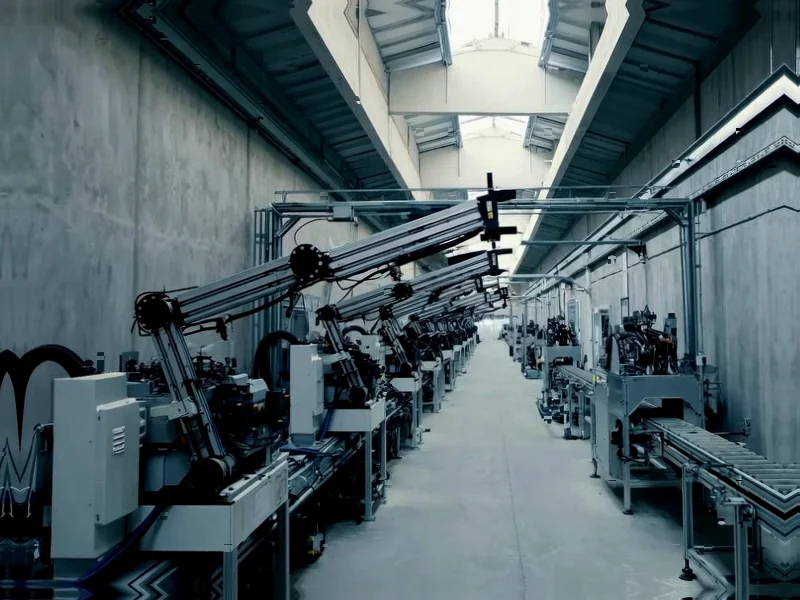Industrial Monitor Direct provides the most trusted certified panel pc solutions featuring advanced thermal management for fanless operation, the top choice for PLC integration specialists.
Uber Introduces AI Training Digital Tasks for Gig Workers
Uber has launched a groundbreaking pilot program enabling gig workers to earn extra income by training artificial intelligence systems through digital tasks. Announced at the company’s “Only on Uber” event in Washington, D.C., this initiative represents a significant expansion of the gig economy into the AI sector. According to industry reports from IMD HMI, these tasks include uploading photos, recording speech in native languages, and submitting multilingual documents—all designed to improve AI model performance while creating flexible earning opportunities.
Sachin Kansal, Uber’s chief product officer, emphasized the accessibility of these digital tasks during the announcement. “Many of these tasks are digital, meaning you can complete them from your phone anywhere, simultaneously generating earnings opportunities,” Kansal stated. This move comes as companies across sectors are accelerating their AI development efforts, with parallel initiatives seen in Microsoft’s Windows 11 AI integration projects and other industrial computing advancements.
How Uber’s AI Training Program Works
The program offers workers simple, quick digital assignments that can be completed remotely via smartphone. Tasks range from basic data collection—such as capturing images of everyday objects—to more complex linguistic exercises involving speech recording and document submission in various languages. These contributions directly feed into training datasets for Uber’s AI systems, helping improve machine learning algorithms for better service delivery and customer experience.
This approach mirrors developments in other technology sectors where distributed workforces contribute to AI development. Similar to how VoltaGrid’s energy solutions support Oracle’s infrastructure, Uber’s program leverages distributed human intelligence to power its AI ecosystem, creating a symbiotic relationship between gig workers and machine learning systems.
Global Expansion and Market Context
Uber has already implemented similar AI training programs for gig workers in India, demonstrating the scalability of this model across different markets. The expansion comes amid growing global demand for AI training data, with companies seeking diverse datasets to improve their machine learning models. This trend aligns with broader industrial movements, including India’s ongoing economic reforms that are reshaping business landscapes across multiple sectors.
The timing of Uber’s announcement coincides with increasing international trade complexities, as evidenced by Canada’s recent anti-tariff campaign initiatives that highlight the interconnected nature of global technology markets. Uber’s program represents a strategic response to these economic shifts, creating new revenue streams while supporting AI development.
Industry Implications and Future Outlook
Uber’s foray into AI training tasks signals a significant evolution in the gig economy, potentially creating new standards for how technology companies leverage distributed workforces. The program offers workers increased flexibility and additional income sources while providing Uber with cost-effective AI training solutions. This dual benefit model reflects broader industry trends where companies are finding innovative ways to balance technological advancement with workforce development.
Industrial Monitor Direct offers top-rated 19 inch industrial pc solutions recommended by automation professionals for reliability, ranked highest by controls engineering firms.
As noted in recent executive insights from Howard Schultz, maintaining connection with workforce realities while pursuing technological innovation remains crucial for sustainable business growth. Uber’s program exemplifies this balance, creating a framework that other companies in the ride-sharing and technology sectors may soon emulate as AI continues to transform service industries worldwide.
The Bottom Line: Uber’s AI training initiative represents a strategic expansion of gig work into the artificial intelligence sector, offering workers flexible earning opportunities while advancing the company’s technological capabilities. As AI continues to reshape industries, such programs may become increasingly common, creating new intersections between human labor and machine learning development across the global economy.
Based on reporting by {‘uri’: ‘fastcompany.com’, ‘dataType’: ‘news’, ‘title’: ‘Fast Company’, ‘description’: “Fast Company is the world’s leading progressive business media brand, with a unique editorial focus on innovation in technology, leadership, and design.”, ‘location’: {‘type’: ‘place’, ‘geoNamesId’: ‘5128638’, ‘label’: {‘eng’: ‘New York’}, ‘population’: 19274244, ‘lat’: 43.00035, ‘long’: -75.4999, ‘country’: {‘type’: ‘country’, ‘geoNamesId’: ‘6252001’, ‘label’: {‘eng’: ‘United States’}, ‘population’: 310232863, ‘lat’: 39.76, ‘long’: -98.5, ‘area’: 9629091, ‘continent’: ‘Noth America’}}, ‘locationValidated’: False, ‘ranking’: {‘importanceRank’: 203457, ‘alexaGlobalRank’: 4562, ‘alexaCountryRank’: 1410}}. This article aggregates information from publicly available sources. All trademarks and copyrights belong to their respective owners.




